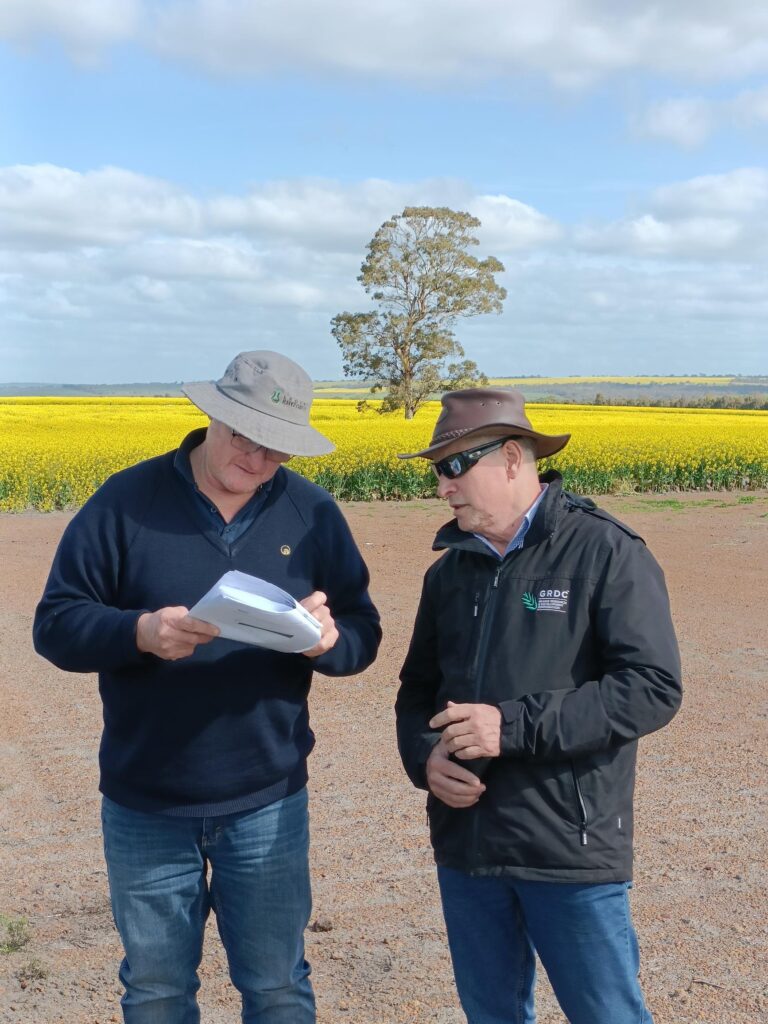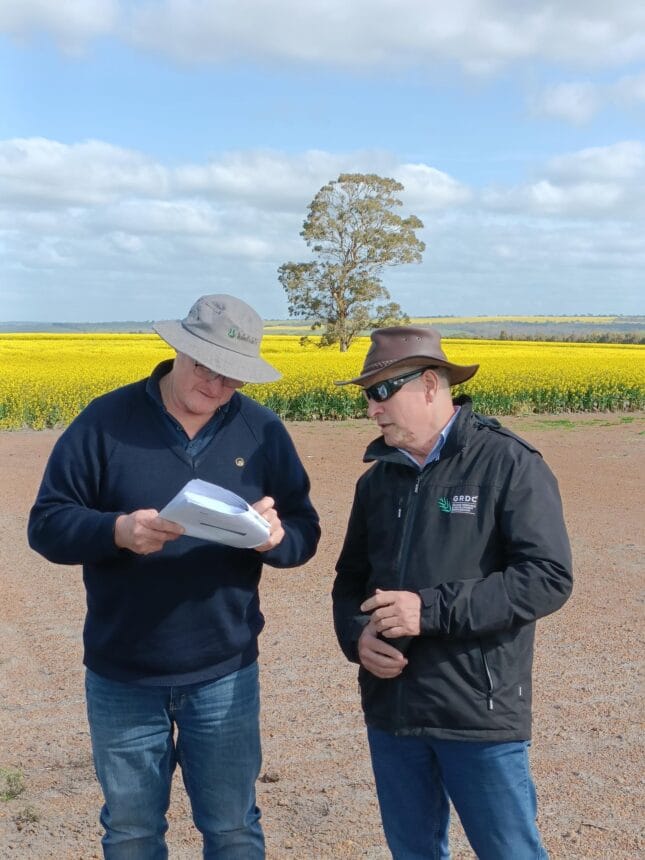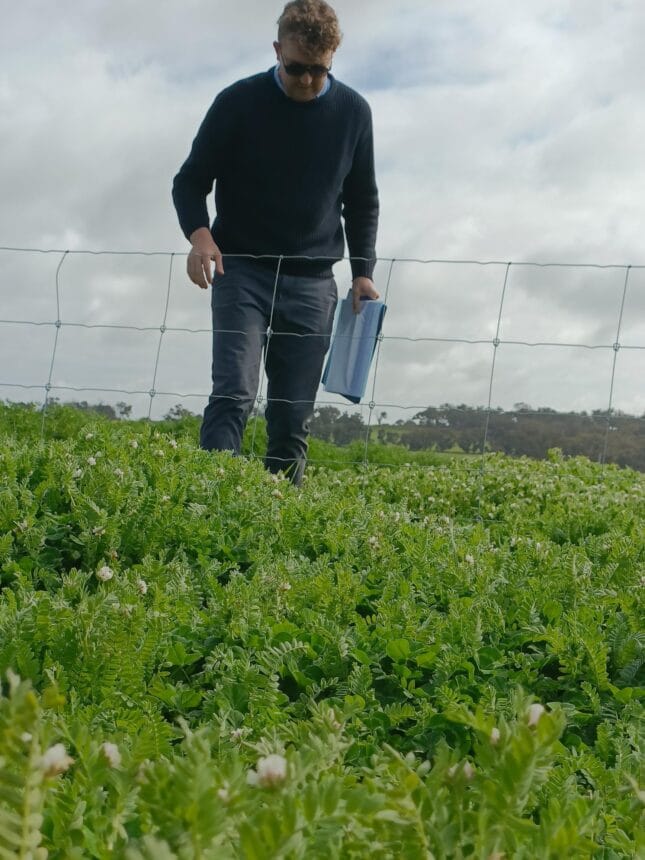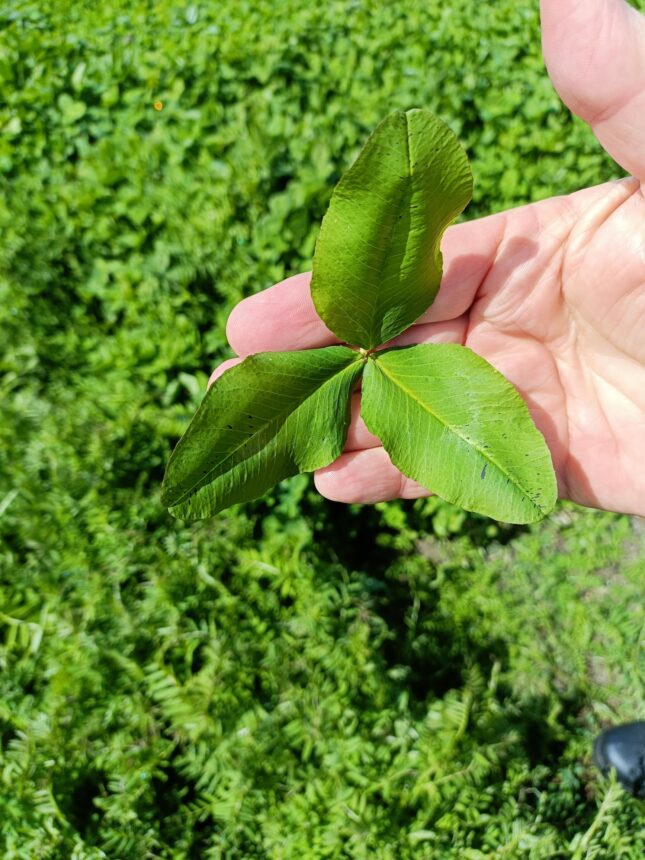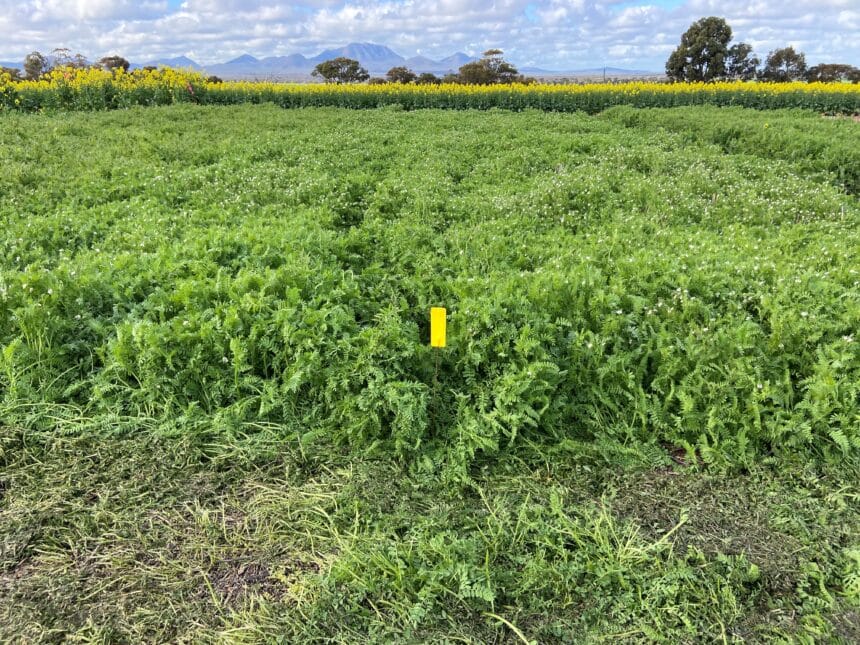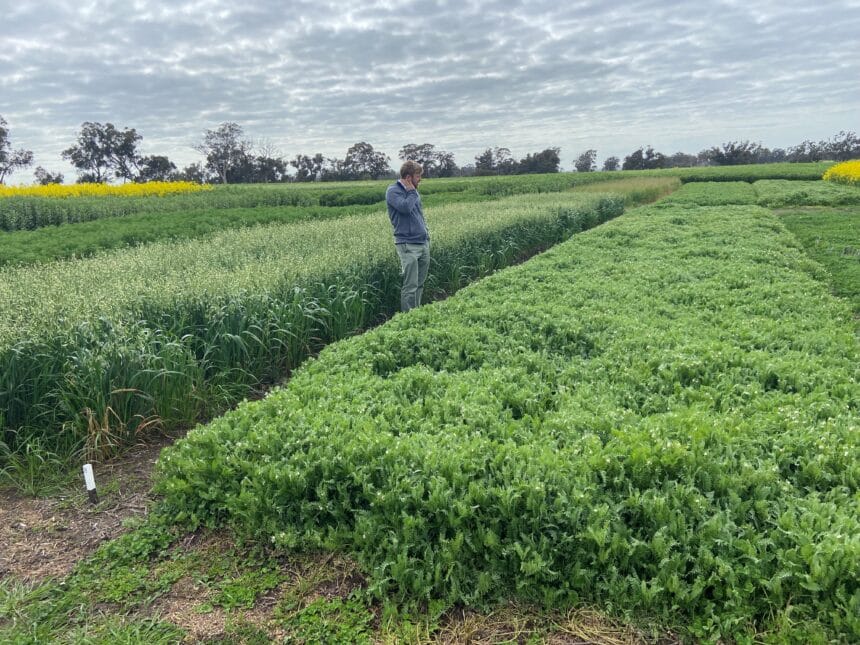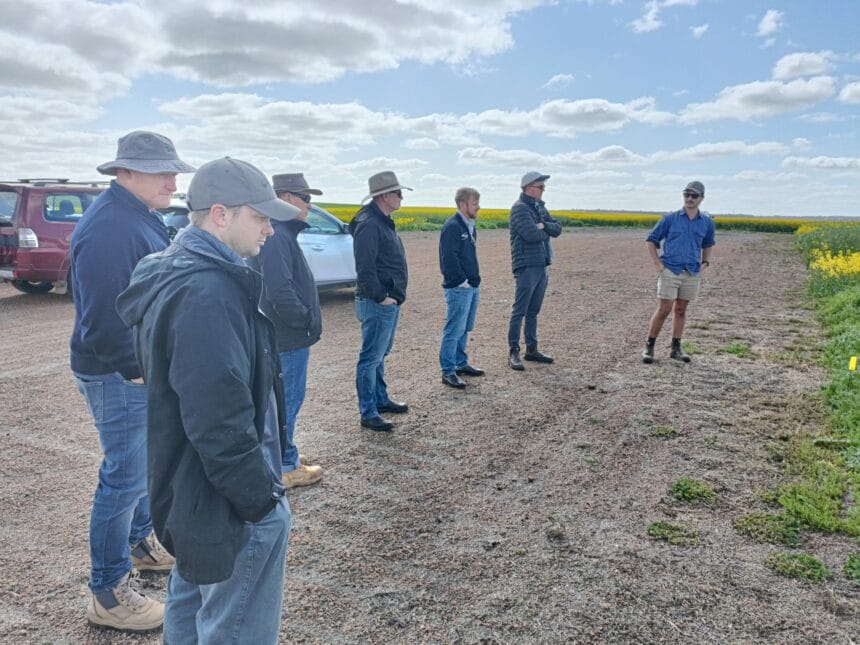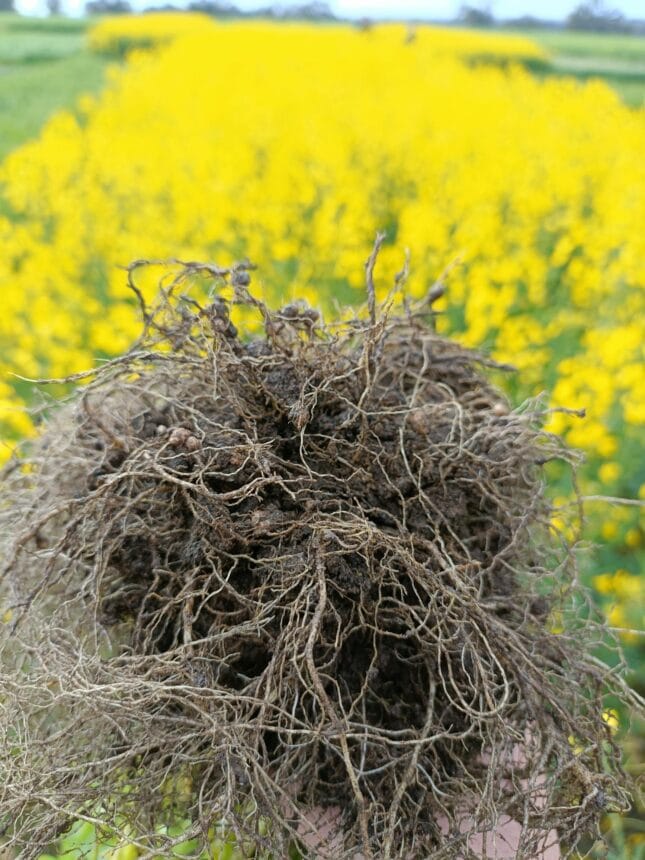The Harvestable Annual Legume Options (HALO) project, led by Principal Research Scientist Dr Ron Yates, is showing strong results in paddocks across Western Australia, with a September Steering Committee tour delivering one clear message: new legume options are proving their worth as practical, profitable alternatives to traditional break crops.
HALO is co-funded by the WA Agricultural Research Collaboration (WAARC) and the Grains Research and Development Corporation (GRDC), drawing on the collaborative expertise of Murdoch University, the Department of Primary Industries and Regional Development (DPIRD), and the benefits are modelled by CSIRO.
The two-day tour visited trial sites at Boilup, Jingalup, Kendenup and Tambellup. Across the stops, the standout performers were later-season hard-seeded French serradella lines, with ‘FHS62’ and its cousin ‘Margurita’ regenerating strongly and consistently out-yielding the staple, sub clover.
WAARC Strategic Research Manager John Statton said HALO was giving mixed-farming growers more legume options for their rotation, that stood up in real seasons, on real soils, with real impact.
“The results we saw this month aren’t theoretical anymore, they’re standing knee-high in WA paddocks,” Dr Statton said.
At Boilup, the committee saw a dry-sown trial established in early March to capture autumn moisture. WAARC PhD cohort student and DPIRD/Murdoch University Research Scientist Rob Harrison, provided valuable insights into the mechanisms that controlled seed dormancy and highlighted how a deeper understanding of these processes could guide more effective crop management strategies – particularly for legumes grown in diverse agricultural systems.
The work compared ways of establishing hard-seeded French serradella, including dormant summer sowing aimed at growers chasing regeneration and lower re-sowing costs, thus boosting farm profit.
“The trial showed how early sowing strategies can unlock a longer legume season and set the foundation for regeneration over years to come,” Dr Statton said.
At Jingalup, regenerating serradella and arrowleaf lines had completely re-established into its third season and was coping well in transient waterlogged conditions.
Feed quality was measured in the high 60s (of digestibility units), with total nitrogen fixed among the strongest recorded within the legume cohort.
“This is exactly the kind of resilience growers in the Frankland River country are looking for – legumes that handle wet feet and still deliver quality feed,” Dr Statton said.
Kendenup provided more evidence that the new lines are stacking up in practice.
End-of-July cuts recorded sub clover biomass yields of about 1.9 tonnes per hectare, vetches at about 3 t/ha, Margarita at 3.7 t/ha and FHS62 at more than 5 t/ha.
Dr Statton said the results were a practical step up from the “sub is fine but light” challenge many growers in higher rainfall country faced.
“It’s not just about yields – it’s about choices that work in real farming rotations,” he said.
Tambellup showcased strong cuts on tough, acidic soils, with pH readings about mid-4 at depth.
Sown in early April, the site returned standout results by late July, including hard-seeded French serradella FHS62 cutting at 6.2 t/ha, outperforming sub clover threefold.
“On country that is challenging, to see those sorts of biomass numbers gives growers real confidence that these options can carry feed and bank nitrogen into the next crop,” Dr Statton said.
With multiple seasons of data now stacking up, HALO is confirming its role in expanding legume options for mixed-farming systems.
Dormant summer-sown serradellas are showing capacity to lift biomass and seed set, while new tools like drones are helping researchers track crop performance at scale.
“Across four sites, we saw consistency, regeneration and productivity that growers can actually put into practice,” Dr Statton said.
“HALO is proving that harvestable annual legumes are more than just an idea, they’re a real option for WA farming systems.”
Participants in the tour included representatives from WAARC, GRDC, DPIRD, Meat & Livestock Australia, and Murdoch University, highlighting the collaborative effort behind HALO’s progress.
Together, the Boilup, Jingalup, Kendenup and Tambellup visits showed a pipeline of legume options that were edging closer to commercial reality.
What linked each stop was the same message – that harvestable annual legumes are showing their value across different soils, seasons and systems.

